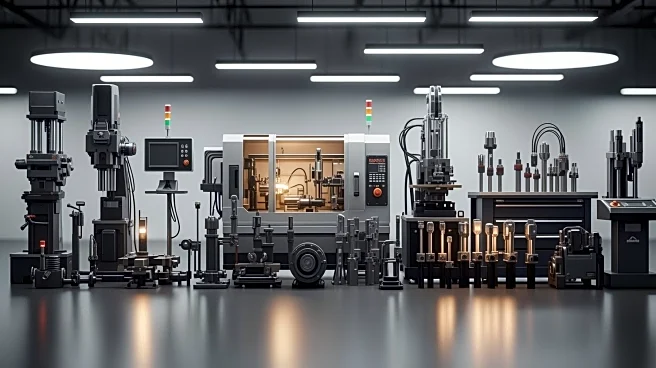What's Happening?
The stationery product manufacturing sector in the United States has experienced a significant decline over the past decade. According to data from the Census Bureau's County Business Patterns, the number
of establishments in the NAICS 32223 category, which includes businesses primarily engaged in converting paper or paperboard into products for writing and similar applications, decreased by 36% from 2010 to 2022. In 2022, there were 317 such establishments. Despite this decline, there was a noted resurgence in consumer interest in stationery products around 2016, with items like journals, greeting cards, and specialty paper products gaining popularity. The industry has also seen innovations such as the incorporation of LEDs and audio elements into printed greeting cards. The distribution of establishments is fairly even, with small manufacturers making up 34%, large manufacturers 31%, and mid-size establishments 35%.
Why It's Important?
The decline in stationery product manufacturing establishments reflects broader shifts in consumer behavior and technological advancements. As digital communication becomes more prevalent, the demand for traditional stationery products has waned, impacting businesses in this sector. However, the resurgence in interest for certain stationery items suggests a niche market that values tangible, personal communication methods. This trend could influence how companies in the industry strategize their product offerings and marketing efforts. The decline also highlights the challenges faced by traditional manufacturing sectors in adapting to changing market demands, which could have implications for employment and economic activity in regions reliant on these industries.
What's Next?
The stationery industry may continue to evolve as companies seek to capitalize on the renewed interest in specialty paper products. Businesses might focus on innovation and diversification to cater to niche markets, potentially incorporating more technology into their products. Additionally, the ongoing government shutdown and its impact on data collection could pose challenges for businesses relying on accurate economic data for planning and forecasting. Companies may need to navigate these uncertainties by adopting flexible strategies and closely monitoring consumer trends.
Beyond the Headlines
The decline in stationery manufacturing establishments also raises questions about the sustainability of traditional manufacturing sectors in a digital age. As consumer preferences shift, industries must balance innovation with preserving traditional craftsmanship. This dynamic could lead to a reevaluation of how products are marketed and sold, emphasizing the value of personal touch and authenticity in an increasingly digital world.











